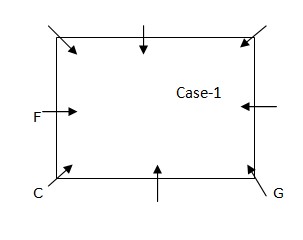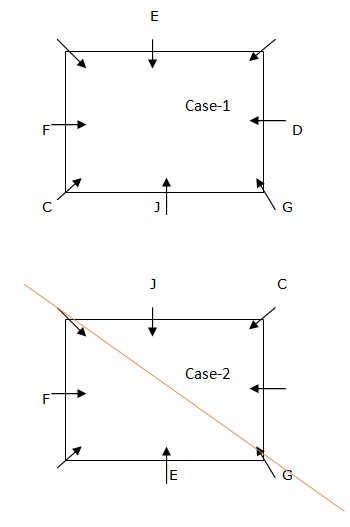Question
If the position of G and F are interchanged, then the
position of C and G are interchanged, then who among the following person sits second to the right of G? Study the following information carefully and answer the below questions Eight persons- C, D, E, F, G, H, I and J are sitting around the square table facing the centre. Four of them sit in the corner and four of them sit in the middle of the sides of the table, but not necessarily in the same order. F sits third to the left of G. One person sits between G and C who sits at the corner of the table. E and J sit opposite to each other. E is not an immediate neighbour of C.D sits second to the left of E.I sits second to the right of H.Solution
We have, F sits third to the left of G. One person sits between G and C who sits at the corner of the table. From the above condition, there are two possibilities. 

1279.908 + 1499.897 ÷ 29.912 × 22.22 = ? + 82.210 × 4.908
- What approximate value will come in place of the question mark (?) in the following question? (Note: You are not expected to calculate the exactvalue.)

88% of 1620 + 29² = ? + 1482 ÷ 18
What approximate value will come in place of the question mark (?) in the following question? (Note: You are not expected to calculate the exact value.)...
What approximate value will come in place of question (?) in the following given expression? You are not expected to calculate the exact value.
...- What approximate value will come in place of the question mark (?) in the following question? (Note: You are not expected to calculate the exact value.)
456 x 99.999 + 654 = ?
- What approximate value will come in place of the question mark (?) in the following question? (Note: You are not expected to calculate the exact value.)
20.57 ×28.04 ÷ ? + 254 = 429.06
Relevant for Exams:


